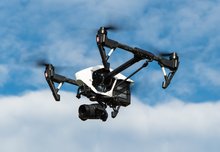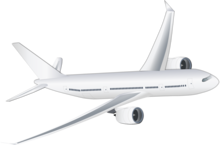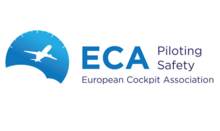
| Newsletter zu Flight Safety Themen der Vereinigung Cockpit |
 |
Dear Members,
Our VC Waypoints represent one aspect of our aim to constantly contribute to the improvement of flight safety. Next to our popular links to publications of IFALPA, ECA, and EASA todays Waypoints edition covers the following topics:
- Fume Event Risk due to APU overfilling
- Unmanned Aircraft Systems Policy published
- B737 MAX Summit in Montreal
- GNSS Vulnerabilities in Middle East Region
- Evidence Based Training
We invite you to browse through the contents to learn the latest about your topic of interest.
Kind regards,
Your Team Flight Safety
|
Fume Event Risk due to APU overfillingCabin air quality and toxic contamination of cabin air are still a major problem in everyday flight operations. Our Flight Health & Environment working group is constantly working on solutions for improvement and provides the following information regarding fume event risks due to overfilling of APUs: |
On A320 aircraft an APU oil overfill may occur when batteries are switched off too early after APU shutdown. According to normal procedures the batteries should be switched off after the APU door is closed. However, when switching off batteries too early, APU oil may not completely flow back into the sump and remains in the APU. Refilling APU oil under the above conditions up to the “FULL” mark may result in a sump overflow upon starting the APU the next time. APU oil thus may run into the APU casing with the potential to contaminate bleed air.
Therefore, we recommend to wait at least two minutes after APU shutdown is indicated on the display before batteries are switched off.
More information on contaminated cabin air and the Fume Event Guide is available on our Fume Event website.
|
Unmanned Aircraft Systems Policy publishedUnmanned Aircraft Systems (UAS) are still one of the fastest growing sectors of air transportation. Therefore, our Remotely Piloted Aircraft Systems working group has published a new policy on UAS. The policy includes VC's fundamental position, recommendations and requirements for the safe operation and integration of UAS into the existing air traffic system. |
B737 MAX Summit in MontrealIFALPA's president Captain Jack Netskar reports from the second B737 MAX Summit. The purpose of this meeting, which was attended by Boeing, major airlines, regulators, ICAO, IFALPA, CAE and other stakeholders was to identify the challenges and gain understanding of a roadmap to bring the B737 MAX back to operation in the safest and most efficient manner possible. |
|
|
GNSS Vulnerabilities in MID RegionWith a Safety Bulletin IFALPA refers to a Safety Adivory of the Regional Aviation Safety Group for the Middle East Region (RASG-MID) regarding GNSS vulnerabilities. In addidtion, the RASG-MID published specific Guidance Material to mitigate the safety and operational impact of GNSS failures. IFALPA encourages pilots to use the attached reporting formular in case of any GNSS anomaly being detected. |
Evidence Based TrainingECA has published a position paper for the implementation of Evidence Based Training (EBT). The availability of data containing flight operations and training activity has improved substantially and ECA supports the implementation of EBT as a logical next step to update current training practices. However, ECA has addressed some concerns that could have negative consequences on the quality of future pilot training. Key concerns and comments thereto are provided in ECA’s position paper. |
|
IFALPA, ECA and EASA News
We would like to draw particular attention to the following position papers and publications:
IFALPA
- Hajj Pilgrimage season started: Safety Bulletin and AIRAC
- Awareness of Airspace Classification: Briefing Leaflet
- Increasing Commercial Space Operations: Position Paper
- Inter Pilot Journal 03/19
ECA
EASA
- EU wide rules on drones
- Safety precautions regarding the transportation of recalled portable electronic devices
As we continuously strive to improve our Waypoint we require and seek your feedback. Please forward your inputs to flightsafety@vcockpit.de or just use the reply function of your mail provider should you have any suggestions for improvement, tips, or wishes regarding topics to address. We will do our best to keep the Waypoints as informative and interesting as possible for your convenience.




